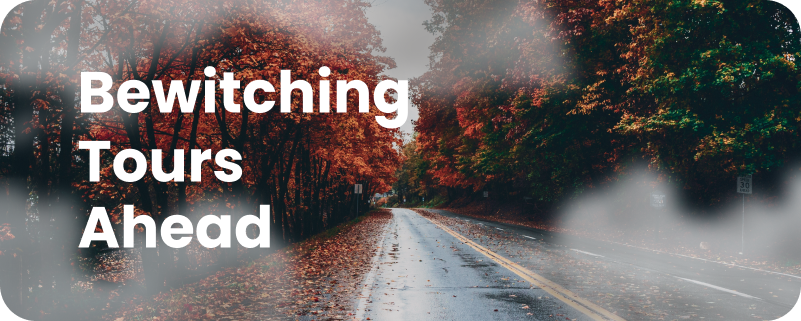
From Vision to Reality: The Story of the Blue Ridge Parkway

The Blue Ridge Parkway is one of America’s most ambitious–and audacious–national park projects. Shaped like a ribbon, this long and narrow park spans 469 scenic miles through the Blue Ridge Mountains. It extends from Shenandoah National Park in Virginia to the Great Smoky Mountains National Park in North Carolina. A road runs through it, but this is no ordinary road—it is a work of art.
“I can’t imagine a more creative job than locating that Blue Ridge Parkway because you worked with a ten-league canvas and a brush of a comet's tail,” said Stanley Abbott, the landscape architect who designed the parkway.
“Your composition is one of fields and fences, lakes and streams, and hills and valleys; and your problem is that of placing your roadway in such a position as best to reveal them…it’s almost a form of sculpture.”
This national park masterpiece in the Southern Appalachians took 52 years--and a dedicated team of skilled landscape architects, engineers, craftsmen and thousands of hard-working laborers to get the job done.
Once finished, the 88,000-acre canvas included numerous:
- campgrounds
- hiking trails
- visitor centers
- historic sites and
- 272 spectacular scenic overlooks
all designed to showcase the natural beauty of the Blue Ridge Mountains.
What is the Story of Blue Ridge Parkway?
 Photo from Blue Ridge Heritage donated by Paul Allen
Photo from Blue Ridge Heritage donated by Paul Allen
The Blue Ridge Parkway was one of the great public works projects started by the Roosevelt Administration during the Great Depression. The idea was launched in 1933 when President Franklin D. Roosevelt visited Shenandoah National Park in Virginia.
At the time, young men of the Civilian Conservation Corps or the CCC were hard at work building overlooks and restoring the natural landscaping on the park's newly constructed Skyline Drive. Touring the scenic mountain-top road, the president liked what he saw.
It was then that Senator Byrd of Virginia boldly proposed extending the road along the mountain ridges from Shenandoah all the way to Great Smoky Mountains National Park. This would connect two national parks with a scenic drive through one of the country's most spectacular landscapes.

Roosevelt thought it was a grand idea and got the ball rolling. In November 1933, Secretary of the Interior Harold Ickes approved the “park-to-park” highway.
On September 11, 1935, construction on the 469-mile drive began. The public works project provided desperately needed jobs for thousands of unemployed workers in Southern Appalachia.
Stanley Abbott: The Landscape Architect Behind the Parkway
 Photo from National Park Service
Photo from National Park Service
With a budget of $16 million dollars, Ickes hired Stanley Abbott, a 25-year-old landscape architect from New York, to oversee the monumental project. He chose the right man for the job. Though young, Abbott had the vision, creativity, expertise and determination to get the job done.
“Now we are coming in here amidst this natural beauty. We had better design and build thoughtfully, sensitively, creatively,” he said. And that’s just what he and his team did.
Restoring Natural Beauty: The Landscaping and Wayside Parks
 Photo from Blue Ridge Heritage
Photo from Blue Ridge Heritage
They certainly had their work cut out for them. The beautiful Blue Ridge Mountains we see today were not quite so beautiful back then. Decades of poor logging and farming practices in the early 1900s had decimated much of the landscape. In some places, there were no trees at all!
So, in addition to designing a 469-mile roadway that would showcase the best scenic views, Abbott also designed the landscaping around it to restore its natural beauty.
Part of his plan included building numerous wayside, or roadside, parks. These scenic overlooks, picnic spots and recreation areas were some of Abbott’s most important contributions.
“They are like beads on a string; the rare gems in the necklace,” he said.
While local workers constructed the parkway, the young men of the Civilian Conservation Corps worked hard to make that road scenic. Under the direction of Abbott and his team of landscape architects, the CCC boys, nicknamed the Boys in Green for their iconic green uniforms, replanted thousands of native trees, shrubs, grasses and wildflowers. They brought the natural splendor of these mountains back to life.
Harmonizing with Nature: The Rustic Simplicity Design

The designers planned everything along the parkway to enhance the region's natural beauty--from fences and guardrails to tunnels, bridges and stone-lined ditches. They recruited master stone masons from Italy and Spain to cut and lay the decorative stonework. All the structures along the parkway were designed to be rustic and simple--in harmony with nature.
“The idea is to fit the Parkway into the mountains as if nature has put it there,” Abbott said.
To achieve this natural look, the parkway’s design included a narrow band of parkland on either side of the road–large enough “to comprehend a mountain or embrace a lake and the hills around with insulation enough to conserve it forever....” said Abbott.
Acquiring this right of way from local homeowners and the Eastern Band of Cherokee called for sensitive negotiating and creative compromise. The purchase of this scenic easement enabled the National Park Service to restore and preserve the roadside landscape. This helped in retaining the natural character of the parkway.
Pleasing the Viewer: The Parkway’s Purpose and Speed Limit
Restrictions were also in place to prevent anything detracting from the views. Drivers did not encounter heavy trucks, telephone poles, billboards, power lines or commercial buildings anywhere on the parkway. And the maximum speed limit was set at 45 miles per hour.
The slower speed limit was intentional. Unlike highways designed for efficiency and speed, the parkway was meant to be enjoyed at a leisurely pace–allowing one to savor the scenery.
“The only reason for the Blue Ridge Parkway is to please the viewer and so its chief concerns are beauty and interest,” said Abbott.
The Completion of the Parkway: The Linn Cove Viaduct and the Final Segment

The parkway was completed in sections, and the first 50-mile segment near Roanoke opened in April 1939. About one-third of the parkway was finished when World War II brought construction to a halt. Building resumed after the war. The final segment of the parkway was completed in 1987 with the construction of the iconic Linn Cove Viaduct, which is one of the world's most complicated bridges and an engineering marvel.
Over 15 million people drive the Blue Ridge Parkway each year. It has been the most visited National Park Service site in America almost every year since 1946. Offering visitors a "ride-a-while, stop-a-while" experience through some of America's most spectacular scenery, the parkway also boasts abundant recreational and cultural opportunities. It's no wonder the Blue Ridge Parkway has come to be called "America's Favorite Drive."

Robin is a former middle school teacher who loves using stories to bring history to life. Born and raised in Hawai’i, she now calls the Pacific Northwest home — but part of her heart will always be in the islands. When not writing or reading about WWII, she’s hiking Mount Rainier, exploring the Olympics, or volunteering as a Volcano Ambassador at Mount St. Helens.
Robin updated and edited the Grand Circle Island Tour, the Legendary North Shore Loop, and the East Oahu Shoreline Drive.
We hope that we’ve given you all the information you need to make the most of your day. Your vacation is extremely important to us so if you have any questions feel free to reach out at aloha@shakaguide.com.
For more detailed information to help you plan, check out our Blue Ridge Parkway Itinerary and Know Before You Go article.
Like this article? Share it on Pinterest!

BLUE RIDGE PARKWAY GUIDES:
Know Before You Go, Blue Ridge Parkway Asheville
Know Before You Go, Blue Ridge Parkway South
Know Before You Go, Blue Ridge Parkway Virginia
Blue Ridge Parkway Asheville Itinerary
Blue Ridge Parkway South Itinerary
Blue Ridge Parkway Virginia Itinerary
BLUE RIDGE PARKWAY RELATED:
29 Best Blue Ridge Parkway Hikes
A Guide to Blue Ridge Parkway Entrances
Blue Ridge Parkway Asheville: The Ultimate Tourist's Guide
Blue Ridge Parkway Virginia: Ultimate Travel Guide
List of Blue Ridge Parkway Overlooks from VA to NC



























 to fuel your ride
to fuel your ride 
